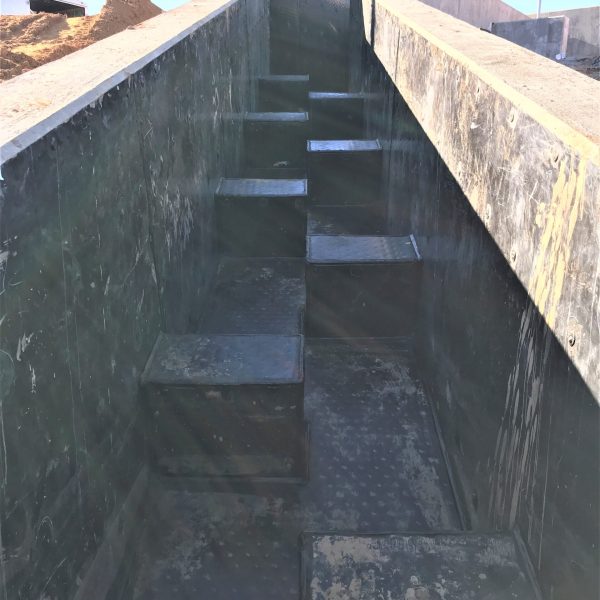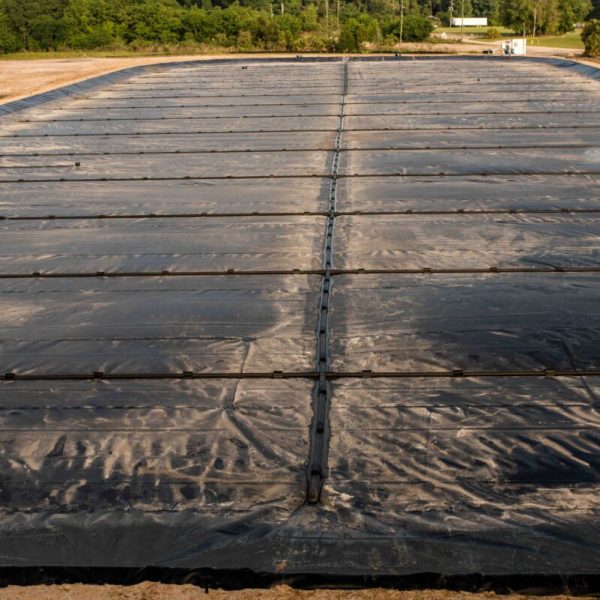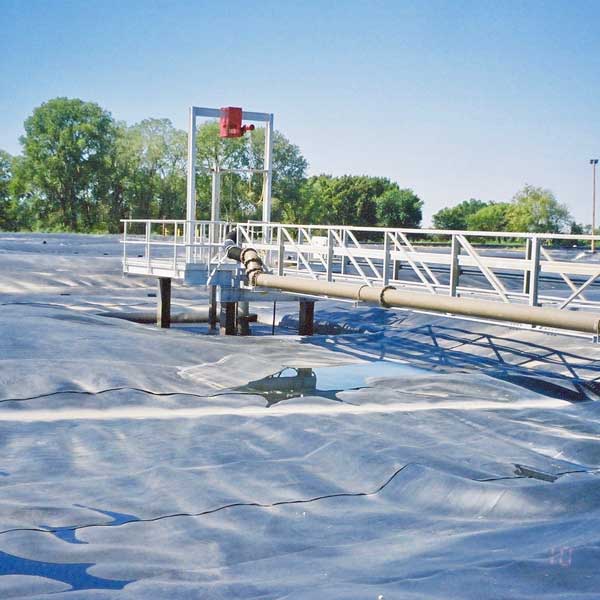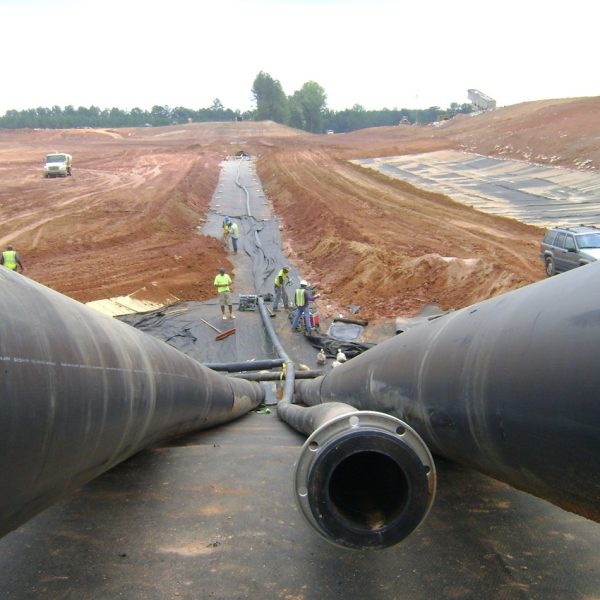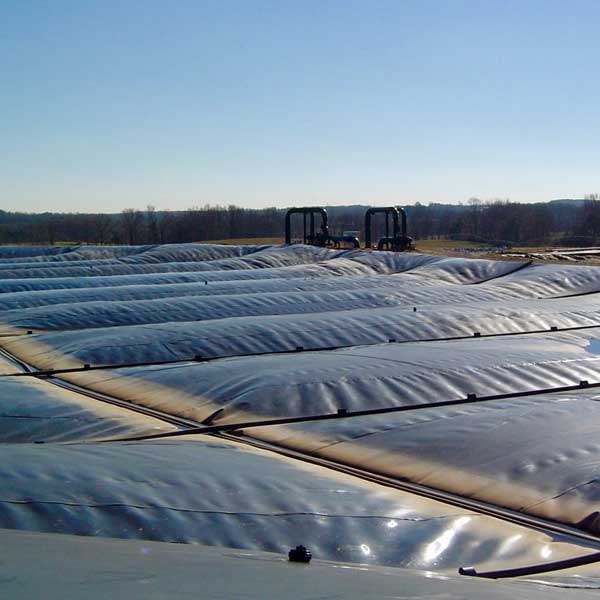Landfill Caps
CONTACT NOW FOR FREE CONSULTATION


















Anaerobic Digester Covers
We design and install HDPE cover systems for anaerobic digesters and are a pioneer in anaerobic digester lagoons for biogas collection and conversion to Renewable Natural Gas (RNG).
Piping Systems
Our custom fabricated piping systems meet even the toughest handling requirements. Materials offer long-term chemical resistance and environmental containment.
Liner Systems
Plastic Fusion has been installing geosynthetic containment systems for more than 40 years.
Concrete Protective Liners
Plastic Fusion is a leader in the installation of concrete protective liners in industrial tanks and storage facilities, wastewater treatment tanks, and chemical processing plants.
Landfill Caps
Landfill caps are essential components for the long-term management and environmental safety of closed landfill sites. These engineered covers, which can be made from compacted soil, geosynthetic materials, or a combination of both, are designed to contain waste, prevent water infiltration, and minimize the release of gases and odors. By creating an impermeable barrier, landfill caps prevent the escape of harmful landfill gases and reduce leachate production, thereby protecting the surrounding environment. Additionally, they help control erosion and promote vegetation growth, enhancing the site’s stability and aesthetic appeal. Plastic Fusion specializes in installing these landfill caps, ensuring reliable containment and environmental protection for decommissioned landfill sites.

Read more
What Is a Landfill Cap?
A landfill cap is a layer of material placed over a closed landfill to prevent the escape of waste materials and gases into the environment. It acts as a barrier to control water infiltration and reduce the risk of contamination to surrounding soil and groundwater.Why Is Capping a Landfill Important?
Capping a landfill is important to minimize the environmental impact of waste disposal sites. This process helps control the release of harmful gases, prevent water from seeping through waste layers, and reduces the potential for soil and groundwater contamination.What Materials Are Used for Landfill Caps?
Landfill caps are typically made of materials like clay, geomembranes, or synthetic liners. These materials are selected for their ability to create a secure barrier that effectively seals the landfill, preventing leakage and gas emissions.How Does Landfill Capping Benefit the Environment?
Landfill capping benefits the environment by containing harmful substances and reducing their exposure to the air, soil, and water. This containment helps limit the spread of pollutants, protects ecosystems, and ensures the safety of nearby communities.What Is a Capped Landfill?
A capped landfill is a waste disposal site that has been covered with a protective barrier to seal off the waste material. This cap prevents rainwater from entering the landfill, minimizes the release of landfill gases, and stabilizes the surface for potential redevelopment.How Are Landfill Covers Different from Landfill Caps?
Landfill covers are temporary layers used during the active phases of waste disposal to contain odors and reduce environmental exposure. In contrast, landfill caps are permanent barriers installed once the landfill is closed to ensure long-term containment.What Is the Role of Caps Dumping Stations in Waste Management?
Caps dumping stations play a crucial role in managing and processing waste that will eventually be contained in landfills. They provide a designated area where waste can be deposited before being properly covered or capped to prevent environmental impact.What Is the Process of Landfill Capping?
The process of landfill capping involves placing a layer of low-permeability material over the waste, followed by a top layer of soil that supports vegetation. This layered approach reduces water infiltration, controls gas emissions, and prepares the area for safe land use.What Are Landfill Gas Collection Systems?
Landfill gas collection systems are engineered solutions designed to capture and manage the gas produced by decomposing organic waste in landfills. These systems prevent the uncontrolled release of landfill gas, primarily methane and carbon dioxide, into the atmosphere. The collected gas can be treated and used as a renewable energy source, helping reduce greenhouse gas emissions and turning waste into a valuable resource.Benefits of Landfill Gas Collection Systems
- Reduction of Greenhouse Gas Emissions Methane is a potent greenhouse gas, and by capturing it, landfill gas collection systems help mitigate climate change by preventing methane from being released into the atmosphere.
- Renewable Energy Generation The methane collected from landfills can be used to generate electricity, heat, or be upgraded into renewable natural gas. This reduces reliance on fossil fuels and supports renewable energy initiatives.
- Odor Control Landfill gas collection systems help reduce odors associated with the decomposition of waste, improving air quality in and around the landfill site.
- Compliance with Environmental Regulations Many governments require landfills to have gas collection systems in place to reduce emissions and protect the environment. Properly installed and managed systems help landfills comply with these regulations.
Components of a Landfill Gas Collection System
- Gas Collection Wells: Vertical wells are drilled into the landfill to collect the gas generated by decomposing waste. These wells are connected to a network of pipes.
- Piping System: A series of pipes are installed to transport the collected gas from the wells to a central location for processing or flaring.
- Gas Collection Pumps: Pumps are used to draw the gas from the landfill wells into the piping system, ensuring an efficient and continuous collection process.
- Gas Treatment Systems: Once collected, the gas may be treated to remove impurities like moisture, hydrogen sulfide, and siloxanes before it is used as energy.
- Flaring or Energy Utilization: If the gas cannot be immediately used, it may be flared to burn off methane and convert it into less harmful carbon dioxide. Alternatively, it can be processed and used to generate electricity, heat, or converted into renewable natural gas (RNG).
How Is Landfill Gas Used for Energy?
Once collected, landfill gas can be processed and utilized in various ways:- Electricity Generation: Landfill gas can be burned in engines, turbines, or boilers to generate electricity, which can be used to power the landfill or sold to the grid.
- Renewable Natural Gas (RNG): The gas can be purified and upgraded into RNG, which can be injected into natural gas pipelines or used as fuel for vehicles.
- Heat Production: The captured gas can be used to provide heat for nearby industrial processes or buildings.


